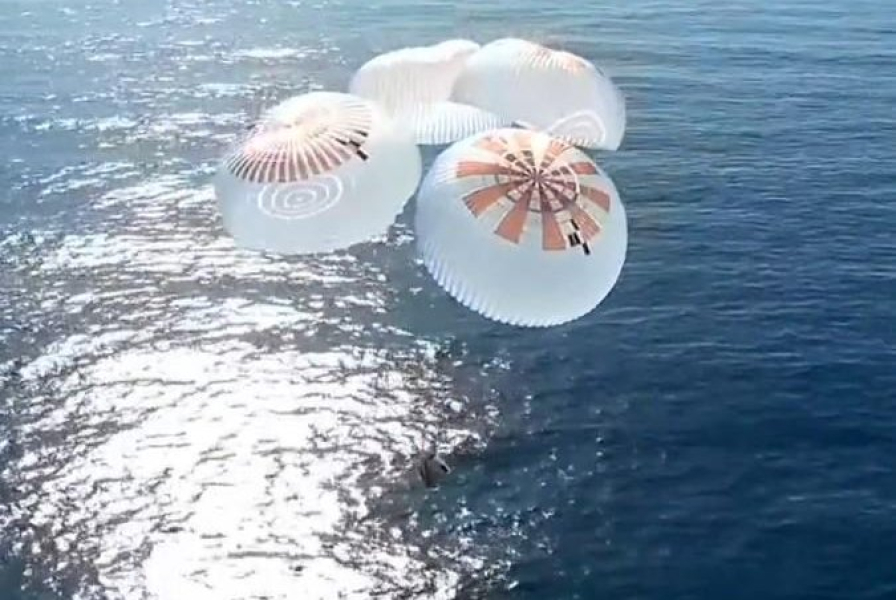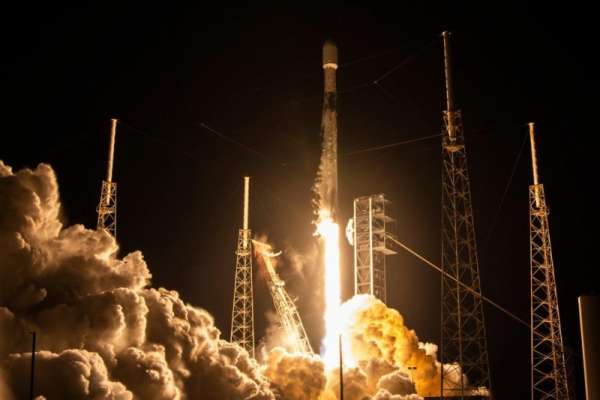
SpaceX's Fram2 mission, the first manned mission to fly around the Earth's North and South Poles, ended with the Crew Dragon capsule splashing down in the Pacific Ocean on Friday morning.
The capsule landed off the coast of Oceanside, California, at 9:19 a.m. Pacific time. The last time humans returned from space to the Pacific Ocean was during the 1975 Apollo-Soyuz mission with three NASA astronauts.
SpaceX intends to move search and rescue operations out of Florida to ensure any debris falls safely into the ocean rather than landing in Florida near the Atlantic Ocean.
The 55-orbit mission was privately funded and included 22 scientific and research experiments, many of which were aimed at assessing the crew's health. They passed over the two poles every 46 minutes.
SpaceX announced last night that the crew would return to Earth on Friday, ending the five-day mission.
Four civilians from different countries donned spacesuits and made final preparations in the cabin. The descent from orbit took place at 8:26 a.m.
Four main parachutes slowed the capsule at about 9:16 a.m. at 6,500 feet.
The speed dropped from about 120 mph to 16 mph.
The experiment marked the first time the crew exited the capsule on their own, rather than with the help of personnel. Unlike the International Space Station, they did not experience the general effects of weightlessness.
Then, carrying bags of equipment, they moved to the recovery ship Shannon, named after Shannon Walker, NASA's first astronaut, who flew on SpaceX's Dragon spacecraft during the Crew-1 mission.
SpaceX successfully launched the private satellite Fram2 on Monday evening from Kennedy Space Center in Florida.
The four-person crew, mission commander Chun Wang of Malta, spacecraft commander Janice Mikkelsen of Norway, pilot Rabea Rogge of Germany and medical officer Eric Phillips of Australia, were in low Earth orbit.
Wang, a Chinese-born cryptocurrency billionaire, co-founded Bitcoin mining company f2pool in 2013. Mikkelson is a filmmaker, Roggie is a robotics researcher, and Phillips is a polar guide.
On Thursday, Chen posted a message about traveling across the poles.
On Wednesday, Chun wrote in X that all crew members experienced space sickness during the first few hours of microgravity and during the first day, but were able to rest well and by the second day everyone had adapted to the new situation.
The crew took the first X-ray in space, tested how the human mind can adapt to spaceflight conditions in the first hours after spacewalking, conducted an electroencephalography experiment with brain mapping, and conducted a continuous glucometer study to find out how fluid movement in space can affect glucometer readings for diabetics, among other experiments.
“I’m proud to have been able to send incredible cameras and lenses into space to capture the first images of the Arctic and Antarctic taken by humans from space,” Fram2 commander and operator Jannicke Mikkelsen wrote on X from Space on Thursday. “These videos are large file sizes and we look forward to sharing them with you after the mission splashes down.”
The vessel was named Fram2, which means “forward” in Norwegian.
The Fram carried explorers in the Arctic and Antarctic between 1893 and 1912. Some of the timber from the original ship, now in a museum in Oslo, Norway, was sent into space.
Sourse: www.upi.com





